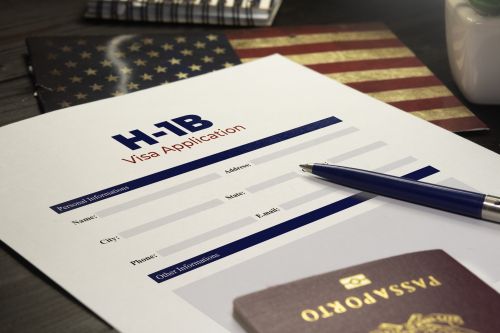Big Changes Ahead for the H‑1B Lottery
By, Becki Young, Managing Partner

On July 21, 2025, the Trump administration revealed a draft rule that would overhaul how the H‑1B visa cap is filled.
The H‑1B visa allows U.S. employers to hire foreign workers in specialty occupations -usually jobs that require at least a bachelor’s degree in fields like technology, engineering, healthcare, and finance. Each year, there’s a limit to how many new H‑1B cases can be approved. This limit, known as the H-1B cap, is currently set at 85,000: 65,000 for most applicants and an additional 20,000 for those with a U.S. master’s degree or higher.
A draft rule is a proposed government regulation – it hasn’t gone into effect yet. Before it becomes final, it must go through a review process that includes a public comment period, where individuals and organizations can offer feedback, raise concerns, or suggest changes. Only after this review and any possible revisions can the rule be approved and enforced.
Today’s H-B cap process is mostly random, but with one important exception: applicants who hold a U.S. master’s degree or higher get a built‑in advantage. They’re entered in a special 20,000-visa “master’s cap” drawing first – and if not selected, they still get a second shot in the main lottery. In short, it’s still a lottery, but one that prioritizes advanced-degree holders.
The new proposal would keep that structure and add another layer of preference based on salary level. This preference could be implemented in one of two ways:
First, instead of treating all entries the same, U.S. Citizenship and Immigration Services could simply rank registrations from highest to lowest wage, selecting the highest-paid applicants first until the annual cap is filled.
Alternatively, USCIS could still use a lottery but weight the chances of selection based on salary level.
To explain what salary level means in this context: the government uses a four-level wage system to determine what salary is appropriate for a specific H-1B position based on the worker’s experience and the job requirements. Level 1 wages are generally for entry-level workers who are new to the field. Level 2 represents workers with some experience, Level 3 for those who are fully competent and often have several years in the field, and Level 4 for experts or senior-level professionals. These levels are set by the Department of Labor and are used when employers file H-1B petitions to show they’re paying fair wages for the job and region.
Under this second proposed option for a revised H-1B lottery, a person paid at a Level 4 wage might receive four entries in the lottery, Level 3 would receive three, Level 2 two, and Level 1 just one. Critics argue this approach wrongly implies that someone with a higher salary is automatically more valuable to the country. In reality, the Department of Labor’s four wage levels mostly reflect how long someone has been in the workforce -not their talent, education, or potential.
If finalized on its current timeline, the wage‑based system could debut for the Fiscal Year 2027 H‑1B filing season, which opens in March 2026.
What would this mean? Early‑career professionals and recent graduates -who tend to earn entry‑level salaries -could see their odds of H-1B selection drop, even if they hold U.S. advanced degrees. By contrast, experienced candidates commanding higher wages would move to the front of the line. Employers with deep pockets and higher salaries would benefit, while start‑ups and smaller companies could struggle to compete.
This type of salary-based system could also have unintended consequences for entire professions.
For example, while certain critical occupations like physicians, pediatricians, dentists, and IT managers are highly paid even in entry level jobs, the proposed rule would make it nearly impossible for employers to sponsor recent graduates in those occupations.
Scientists and educators would also be affected. For example, nearly 90% of petitions filed for physicists, microbiologists, and medical scientists and for math and science teachers at public middle and high schools are for Level 1 or Level 2 wages. That means many of these workers could struggle to qualify for H-1B selection.
Critics of the proposal say it sends the wrong message -that only the highest-paid jobs are valuable. One example often cited is Katalin Karikó, the scientist who won the 2023 Nobel Prize in Medicine for her research on mRNA, which laid the groundwork for important medical advances. When she first came to the U.S. in 1985, she earned just $17,000 on a J-1 visa (about $42,000 in today’s dollars). Under the proposed H-1B rule, someone like her might never have had the chance to work in the U.S – a reminder that salary doesn’t always reflect potential or value to society.
The bottom line: while this change is still a proposal, it marks a major shift from a system based on chance (with some educational preference) to one that puts a heavy thumb on the scale for high-paying employers. As the rule moves through the review process, it’s important for employers, students, and skilled workers alike to understand how the landscape could change -and how to plan for what’s ahead.
Need help navigating the H‑1B landscape? Our team is tracking the rule and can advise on next steps—feel free to contact us.

